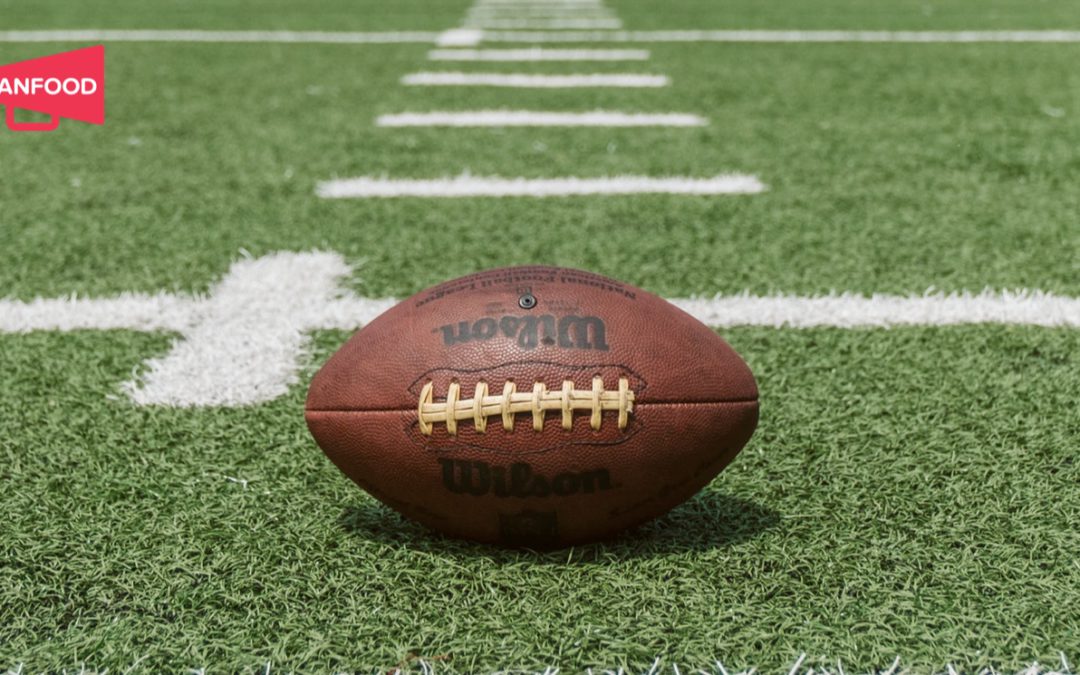This year has been so shrouded in uncertainty that we have learned to accept and live with it. On the one hand, new coronavirus cases in the U.S. have topped 8.7M with deaths surpassing 225,000. On the other hand, Pfizer has already applied for first approval of its vaccine and it remains hopeful that it will be administered soon.
At the end of the day, the sentiment that’s shrouding the sports and live event space is — if summarized by one word — uncertainty. Leagues are trying to make decisions based on existing information as to when seasons should begin, and if so, how many fans should be allowed to attend. Individual teams and stadiums struggle to make the final call as to how stringently they want to adhere to safety guidelines.
Most importantly, when games can return as normal, how enthusiastic will the fans be about returning?
Given the inspiring progress with the vaccine development, we remain very hopeful. We believe fans’ appetite will be strong (pun intended), especially after almost a full year of being deprived of live sports games.
The real question is, what can teams and stadiums do between now till then? What’s the best way to ensure fan safety? What can teams do right now to keep the fans engaged? How can venues take advantage of the return of sports next year and offset the revenue loss in 2020?
In this blog, we attempt to answer all these questions.
 As you can see in the graph below, digital advertising revenue has drastically increased over the past decade and now that in-person activities are restricted, this trend is only going to accelerate faster.
As you can see in the graph below, digital advertising revenue has drastically increased over the past decade and now that in-person activities are restricted, this trend is only going to accelerate faster.
 Given how slow things are now due to the pandemic, it’s the best time ever to upgrade your inventory if you haven’t already. Being able to pitch to brands with highly effective, data-driven digital assets will help you greatly increase your sponsorship revenue.
We have another blog briefly outlining the difference between in-app and in-venue sponsorship assets and how you should choose for your venue. If you’re interested to have a quick checklist on how to acquire sponsors, here’s a blog with some quick tips.
We recommend any venue using in-venue ordering for the first time to take advantage of slower days and smaller crowds to get the foodservice team warmed up to the system, as well as test what concession stand setup makes the most sense for the fans.
To learn more about our integrated in-stadium contactless ordering solution, submit the form on this page and our team will reach out promptly to answer any question you may have.
Given how slow things are now due to the pandemic, it’s the best time ever to upgrade your inventory if you haven’t already. Being able to pitch to brands with highly effective, data-driven digital assets will help you greatly increase your sponsorship revenue.
We have another blog briefly outlining the difference between in-app and in-venue sponsorship assets and how you should choose for your venue. If you’re interested to have a quick checklist on how to acquire sponsors, here’s a blog with some quick tips.
We recommend any venue using in-venue ordering for the first time to take advantage of slower days and smaller crowds to get the foodservice team warmed up to the system, as well as test what concession stand setup makes the most sense for the fans.
To learn more about our integrated in-stadium contactless ordering solution, submit the form on this page and our team will reach out promptly to answer any question you may have.
Explore and Implement Contactless Technology
Due to Covid-19, contactless payment technology is rising in demand faster than expected — both for consumers and businesses alike. Tim Cook, CEO of Apple, said during Apple’s 4th quarter earnings call on October 30th that contactless payment ” has taken on a different level of adoption. And that I think we’ll never go back.” In a recent survey, more than half (51%) Americans indicated that they want to use mobile ordering directly from their seats, versus 18% self-service kiosk at concessions, 3.8% hawkers with handhelds, and 26% all of the above. 55% expect to use mobile ordering in stadiums post Covid-19, and it may become integrated more as the trend for mobile ordering at stadiums continues to rise. The No. 1 reason why fans like to use mobile ordering in stadiums? Avoiding waiting in concession lines (39%). 30% Americans responded “convenience of ordering food/beverage directly from their seat”, and 17% said mobile ordering “helps avoid contact with staff.” It’s almost certain that the adoption of in-stadium and in-seat mobile ordering will be much higher post COVID-19, and that the ability for stadiums to offer contactless ordering options is going to be the expectation. During 2020, many of FanFood’s partner schools, stadiums and drive-in theaters opted to use FanFood contactless ordering as the only acceptable way to order. We expect to see that post COVID-19, even if contactless ordering (where fans can scan a QR code or enter an URL to order directly from concession stands) isn’t going to be the only way to order, it will be highly preferred compared to pre COVID-19 times. Now is the best time for teams and venues to start exploring and comparing different platforms to see which one fits their operational model the best. We have previously published a blog on 10 things to consider when implementing contactless ordering for any venue. Make sure the platform you go with check all the necessary boxes for a smooth-running operation at your venue. If you’re able to have a limited number of fans in the stadium, it’s the best opportunity to adopt the technology now so that your foodservice team can get used to the new system. With a relatively lower traffic, it’s easier to get the team up to speed with operating the Manager Portal and fulfilling orders digitally. This will fully prepare the team and your concession stands for when sports fully return.Invest In Digital Fan Engagement
If digital fan engagement was on the rise before COVID-19, it’s only getting more and more prominent these days. Digital fan engagement refers to engaging with fans on mobile devices through social media, team apps, interactive programs and advertising, versus traditional means such as cable TV, in-stadium signage etc. Data has shown that 80% of fans use their phones while attending live sports events, while 52.6% of fans use their smartphones to check for updates and access sports content while watching live streaming. Given that very few games are happening these days, it’s a better time than ever to keep your audience engaged and warm so that they’re ready to hit the stadium once venues open up. In a recent episode of our podcast, The Playbook, we invited the Columbus Blue Jackets‘ Director of Digital Media, TJ Ansley, to talk about their digital fan engagement strategies both during COVID-19 times, and for once games return. It could be especially difficult to do so now given there’s not much sports content going on. The Columbus Blue Jackets do this by telling the stories of their players and showcasing their characters. Both Nick Felino and Cam Atkinson on the team are known for being a family man — so the team highlights that aspect of their personality. This intimate storytelling strategy has helped the team build lifelong fans, even those who aren’t hardcore sports fans. Another rising trend has been team apps, where fans can see all updates, information, livestream content and social feeds about a team, and join loyalty programs to win rewards. Having your fans download a team app means you can customize the in-app content for them, and push information / news that would interest them the most. The good news is, now sports teams can have the one-stop shop solution that includes both a team app and contactless ordering technology included in the app. By partnering up with From Now On, we’re able to offer a contactless game day solution that includes e-ticketing, to digital fan engagement, to contactless concession ordering, to loyalty program, to digital advertising assets and more. This means instead of shopping around for different vendors to satisfy different digital needs, teams now have one integrated platform to put the entire game day in the fan’s pocket.Update Sponsorship Asset Inventory
Digital assets are the future of sports sponsorship for a variety of reasons: They’re trackable so that you can measure the exact return on investment; You can collect more data about your fans each time they interact with the assets; It’s a more personalized experience since the assets can be automatically configured based on each fan’s own preferences. The reasons go on. This table below compares the differences between traditional and digital assets. When advertising budget is limited, which type of asset would a brand let go first?-jpg.jpeg) As you can see in the graph below, digital advertising revenue has drastically increased over the past decade and now that in-person activities are restricted, this trend is only going to accelerate faster.
As you can see in the graph below, digital advertising revenue has drastically increased over the past decade and now that in-person activities are restricted, this trend is only going to accelerate faster.
 Given how slow things are now due to the pandemic, it’s the best time ever to upgrade your inventory if you haven’t already. Being able to pitch to brands with highly effective, data-driven digital assets will help you greatly increase your sponsorship revenue.
We have another blog briefly outlining the difference between in-app and in-venue sponsorship assets and how you should choose for your venue. If you’re interested to have a quick checklist on how to acquire sponsors, here’s a blog with some quick tips.
Given how slow things are now due to the pandemic, it’s the best time ever to upgrade your inventory if you haven’t already. Being able to pitch to brands with highly effective, data-driven digital assets will help you greatly increase your sponsorship revenue.
We have another blog briefly outlining the difference between in-app and in-venue sponsorship assets and how you should choose for your venue. If you’re interested to have a quick checklist on how to acquire sponsors, here’s a blog with some quick tips.


Recent Comments